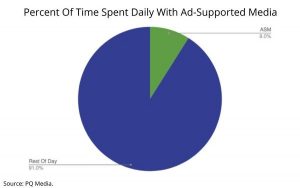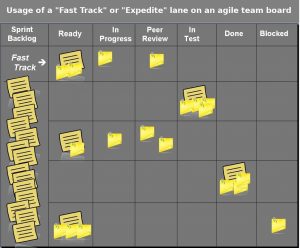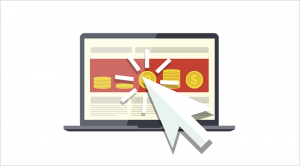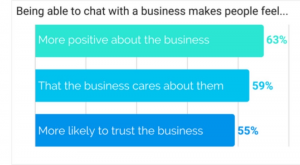Most workers at big American companies receive employee wellness benefits. But what if those programs are actually a kind of worker surveillance—that may not even be making workers healthier?
A new report from the Data & Society nonprofit argues exactly that. A team of researchers claim that the employee-wellness boom should be understood as a dubious kind of “wellness capitalism”—in which public health increasingly revolves around a privatized and largely unregulated “benefits maze” of unproven, data-collecting tech products that could have serious unforeseen consequences.
According to coauthor Tamara K. Nopper, a senior researcher at the nonprofit, a review of the available research on employee-wellness programs shows they produce at best mixed results for employee health — while creating new risks. “A lot of people actually want their employers to deal seriously with mental health issues and wellness,” she says. “But the way it’s being offered speaks to the continued private, profit-driven, cost-saving model of healthcare and the rise of the wellness industry that’s capitalizing off of it.”
The employee-wellness industry has been booming in recent years, growing from a $6 billion sector in 2012 to one worth roughly $56 billion in 2022 and is expected to surpass $100 billion within the next decade. Behind the growth is a belief among employers that wellness measures can reduce worker burnout and help save on health insurance costs—an argument endorsed by federal agencies like the Centers for Disease Control and Prevention (CDC).
But the wellness benefits that companies offer have grown increasingly complex. Nopper says their report aims to “show how many entities one worker can be navigating.” In addition to employee-assistance programs, which often offer services like mental health counseling; and employee-wellness programs, which encourage healthy lifestyles, companies now also pay for a growing web of benefits managers, benefits navigators, benefits administrators, and benefits centers—many of which are packaged as apps or digital tools.
While the increasingly data-driven approach to employee wellness is appealing to investors and corporate customers, it raises significant privacy concerns for workers, says coauthor and research analyst Eve Zelickson. “How confusing it must be as a worker to have 15 different vendors and try to figure out where to go for what and get any sort of clarity on who’s keeping what data, where is that going, and who is it being shared with. Especially if it’s all coming from a service that’s being paid by your boss.”
As an example, the report cites MoveSpring, a fitness tracker app that asks employees to wear a physical sensor connected to its web platform, and then compete against coworkers to win prizes for such activities as most steps walked in a given period. Employers who use the service are able to see all of their workers’ detailed activity data—which is stored on MoveSpring’s servers—and users can’t make their activity private to admins. This is made possible by “very ambiguous privacy policies and terms of service, which is typical” across the industry, Zelickson says. (Anthony Knierim, MoveSpring’s cofounder, says the app is “incredibly transparent through the onboarding flow” and that employees are free to sign up for the app anonymously. The company does not share or sell user data, and mainly uses it to improve the app’s gamification, he says, adding that MoveSpring purges user data if a user deletes their account or a workplace’s contract ends.)
But with few established guardrails around wellness tech companies’ handling of employees’ sensitive health data, workers who grant employers access to their health data could conceivably be left vulnerable to discrimination—or even criminalization for things like abortion or using drugs. The researchers say regulators have done little to address these risks. The federal health privacy rules in HIPAA don’t apply to employers, which means that employee-wellness benefit programs aren’t subject to the strict guardrails that guard patient data in clinical settings. There has been no serious legislative attempt to patch this loophole; the most promising was the 2022 American Data Privacy and Protection Act (ADPPA), the authors write, but that effort has fallen by the wayside in the new Republican-led House.
If anything, the federal government has fueled the growth of wellness capitalism, the authors say. HIPAA, passed in 1996, opened the door for employers to set financial incentives and penalties for workers based on their participation in wellness programs. And in 2010, the Affordable Care Act significantly increased the maximum allowed incentives, which has put even more pressure on workers to participate, Nopper says. Moves like these demonstrate the state’s role in privatizing public health, while “abdicating its own responsibility for having a generous, robust, and nonpunitive public health system for people,” she says.
Researchers need more detailed knowledge of how employers are managing their wellness programs, Nopper says: “How do employers decide what wellness programs to implement? How do they calculate the value of these wellness programs? How do they decide if they get access to the data? What do they do with it?” But these answers are difficult to get because of companies’ secrecy, leaving an “empirical gap,” she says.
In the meantime, Zelickson hopes to see workers organize to find out more about how their wellness benefits are structured, and for labor unions to scrutinize the packages more closely during negotiations. But ultimately, “the government needs to step up and regulate this industry,” she says. “And the government needs to step up and demand transparency around all the new tech that’s essentially being tried out on workers.”
(2)









